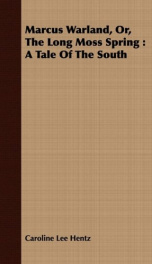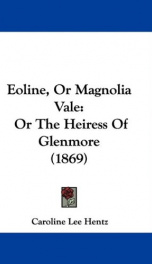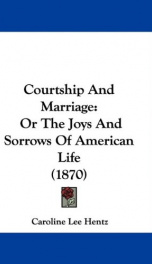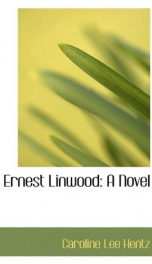Hentz Caroline Lee

Caroline Lee Whiting Hentz (1800–1856) was an American novelist and author, most noted for her opposition to the abolitionist movement and her widely-read rebuttal to the popular anti-slavery book Uncle Tom's Cabin. She was a major literary figure in her day, and helped advance women's fiction. Caroline Hentz in her everyday life was almost identical to her pro-abolitionist adversary Harriet Beecher Stowe. Both of these Nineteenth Century women hailed from Massachusetts, both married unsuccessful men, and taught beside them. Both ladies had moved to Cincinnati, Ohio, in 1832, where they became personal friends. To further the similarities for these opposing leaders in the abolitionist movement, both became major nationally known authors of popular fiction. In 1824, Caroline Whiting married Nicholas Marcellus Hentz. After marrying they moved to now Florence, Alabama and started an all-girl school called Locust Dell Academy. Some years later, Locust Dell Academy burned down and in its place Willingham Hall was built. This hall can be found on the campus of the University of North Alabama. Mrs. Hentz wrote of her love for the area in a poem called La Fayette. During the early 1830s, Hentz and her husband, along with their three children, moved to North Carolina. The Planter's Northern Bride, published in 1854 in Philadelphia, would be Hentz’s last published and most widely known work before her death two years later. In this body of work, Caroline Hentz came to the definitive defense of slavery. Hentz used her expertise, having lived for many years in the South, to claim that she was more knowledgeable about slavery than Stowe. Hentz wrote about the caring relationship between master and slave, a Southern opinion on slavery that strongly contrasted with the New England-bred Stowe's characterization of the institution. Hentz introduces in this novel several villains, including a busybody who tries to free slaves against their will. In doing this, she tries to discredit the abolitionist argument of inhumane treatment of the Southern slaves. She portrays the people wanting to tear down the institution of slavery as actually being motivated by personal gains, not by a desire to improve mankind. She expanded on this motivation to include the industrial revolution that was taking place in the North, which would require the massive amounts of cheap labor that only the south could give by way of slavery. Hentz resided towards the end of her life in Marianna, Florida. She is buried there in the cemetery of St. Luke's Church.
do you like this author?
What readers are saying
What do you think? Write your own comment on this book!
write a commentWhat readers are saying
What do you think? Write your own comment on this author!
write a commentBook list

Helen and Arthuror,Miss Thusa's Spinning Wheel
Series:
Unknown
Year:
Unknown
Raiting:
3.5/5
Show more
add to favoritesadd In favorites

Ernest Linwoodor,The Inner Life of the Author
Series:
Unknown
Year:
Unknown
Raiting:
4.5/5
Show more
add to favoritesadd In favorites

the planters northern bride or scenes from mrs hentzs childhood
Series:
Unknown
Year:
Unknown
Raiting:
3/5
Show more
add to favoritesadd In favorites
Book list

Helen and Arthuror,Miss Thusa's Spinning Wheel
Series:
Unknown
Year:
Unknown
Raiting:
3.5/5
Show more
add to favoritesadd In favorites

Ernest Linwoodor,The Inner Life of the Author
Series:
Unknown
Year:
Unknown
Raiting:
4.5/5
Show more
add to favoritesadd In favorites

the planters northern bride or scenes from mrs hentzs childhood
Series:
Unknown
Year:
Unknown
Raiting:
3/5
Show more
add to favoritesadd In favorites

the lost daughter and other stories of the heart
Series:
Unknown
Year:
Unknown
Raiting:
3.5/5
Show more
add to favoritesadd In favorites

the banished son and other stories of the heart
Series:
Unknown
Year:
Unknown
Raiting:
4/5
Show more
add to favoritesadd In favorites

robert graham
Series:
Unknown
Year:
Unknown
Raiting:
4.5/5
Purchase of this book includes free trial access to www.million-books.com where you can read more than a million books for free. This is an OCR edition with typos. Excerpt from book: ROBERT GRAHAM. CHAPTER I. Moonlight rests upon Pine Grove. The tall trees, whose number and stateliness give name to the darkly-shaded place, lift up their green tuft-knots to the skies, and the live oaks, with their long sweeping drapery of gray old moss, stretch their druid arms before the white-walled mansion. Beneath the solemn shadows of the oaks and pines, a tall figure walks, pensive and lonely, its outlines alternately silvered by moonlight and darkened by shade; but they may still be recognised as the unrivalled lineaments of Robert Graham. Years passed under the burning sun of an Indian clime have not dimmed the splendour of his manly beauty, or even darkened the whiteness of his marble brow. He has been on a holy mission, and if the face of the prophet shone, after being forty days on the mountain with the God of Israel, it is not strange that one, who had been for three years in daily, hourly intercourse with his Maker, should bear on his countenance the reflection of His excellent glory. Yes! Robert Graham, having returned once more to his native land, sought the home of his boyhood, and the grave of his mother. His last act before embarking for a foreign clime was the erection of a monument to her memory, a twin obelisk to that which marked the spot where the mother of Linda was laid. Thither he now bent his footsteps, through the long dewy grass which overgrew the path in rank luxuriance. Negroes shun the place of graves, believing it thronged with the spirits of the dead; and it may be questioned if the gatewhich led into this enclosure had been opened since Robert closed it on the evening of his departure. The damp weeds clung to his feet, and impeded his steps. A weeping willow, planted by her husband, swept its long branches over the grave of the ...
Show more
add to favoritesadd In favorites

marcus warland or the long moss spring a tale of the south
Series:
Unknown
Year:
Unknown
Raiting:
4.5/5
Many of the earliest books, particularly those dating back to the 1900s and before, are now extremely scarce and increasingly expensive. We are republishing these classic works in affordable, high quality, modern editions, using the original text and artwork.
Show more
add to favoritesadd In favorites

love after marriage and other stories of the heart
Series:
Unknown
Year:
Unknown
Raiting:
3.5/5
Show more
add to favoritesadd In favorites

eoline or magnolia vale or the heiress of glenmore
Series:
Unknown
Year:
Unknown
Raiting:
5/5
Show more
add to favoritesadd In favorites

courtship and marriage or the joys and sorrows of american life
Series:
Unknown
Year:
Unknown
Raiting:
4.5/5
Show more
add to favoritesadd In favorites

Helen and Arthur
Series:
Unknown
Year:
Unknown
Raiting:
4.5/5
Helen and Arthur. please visit www.valdebooks.com for a full list of titles --This text refers to the Kindle Edition edition.
Show more
add to favoritesadd In favorites

Ernest Linwood
Series:
Unknown
Year:
Unknown
Raiting:
2.5/5
Many of the earliest books, particularly those dating back to the 1900s and before, are now extremely scarce and increasingly expensive. We are republishing these classic works in affordable, high quality, modern editions, using the original text and artwork. --This text refers to an alternate Paperback edition.
Show more
add to favoritesadd In favorites
What readers are saying
What do you think? Write your own comment on this author!
write a commentif you like Hentz Caroline Lee try:
readers also enjoyed
What readers are saying
What do you think? Write your own comment on this author!
write a commentGenre
if you like Hentz Caroline Lee try:
readers also enjoyed
Do you want to read a book that interests you? It’s EASY!
Create an account and send a request for reading to other users on the Webpage of the book!




